You think you have what it takes to own your own plumbing business? Every first-year apprentice dreams about it. But owning your own business someday takes hard work, perseverance and a willingness to learn. Recently, we talked with four prominent business owners about what they thought it took to go off on their own, and Read more
Featured Articles

You think you have what it takes to own your own plumbing business? Every first-year apprentice dreams about it. But owning your own business someday takes hard work, perseverance and a willingness to learn. Recently, we talked with four prominent business owners about what they thought it took to go off on their own, and what they have learned from their experiences of ownership. Here is the advice that they shared:
 Linda Hudek
Linda Hudek
Owner, LH Plumbing Services LLC
Fairfield, Ohio
The most important things were knowing my worth as a professional and licensed plumber. So many people start a business thinking their previous boss was overcharging or “lining their pockets off my back,” in their words. Don’t undercharge. Knowing and understanding expenses is so important. Your wage is not the same as the business profit.
It’s also important to not fall for the temptation of going into business too quickly when you are not knowledgeable enough in the technicalities of you field. Being uneducated or undereducated and inexperienced in plumbing can cause major property damage and even death to yourself and your customers. I went into business still lacking some knowledge that I had to learn the hard way.
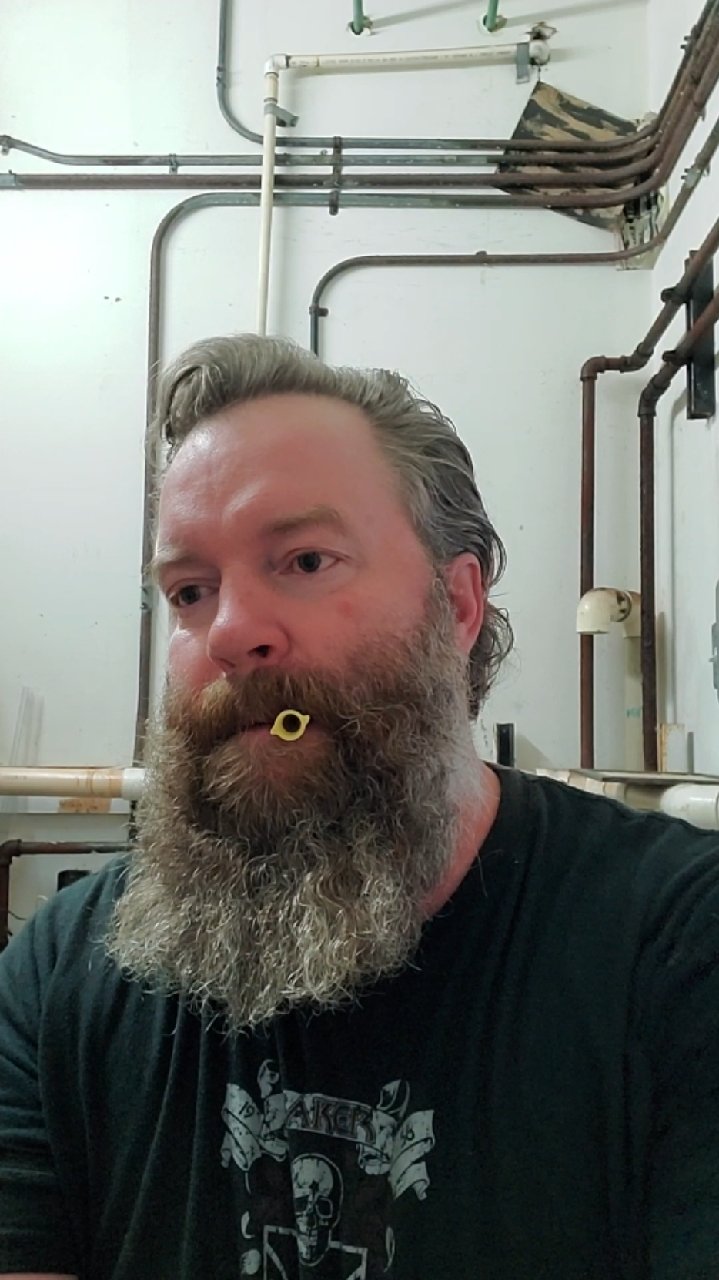 Bob Baker
Bob Baker
Owner, Baker Plumbing Inc.
Master Plumber/Gasfitter
Calgary, Alberta, Canada
Cash flow is KING! You can be the best tradesperson on earth with skill and knowledge oozing from your pores! None of that matters if you ain’t getting paid. So many people start their business by market research—what’s the average hourly rate. They phone around and get some pricing and figure the average is $115 an hour so I’m going charge $105 and steal my piece of the pie through price.
Initially, it seems like a decent plan but the guy starting his business three months after you has the same plan and before you know it you’re losing those cheap clients to the cheaper guy. My suggestion is add up all your monthly expenses—rent, fuel, truck, your personal wage, etc. and determine what you need to make to meet your needs. Distill that down to an hourly rate and stick to it. If you’re good, the clients will come.
Also, the best tools don’t make you the best. It’s a hard one with all the cool tools out there these days and their splashed all over social media. Set yourself a tool budget and stick to it. The formula pertains to skills, knowledge, experience, and then tools. Expensive tools don’t make you money, your skills and knowledge do. Tools make your job easier but as I’ve told my boys, learn the hard way first so you can appreciate the easier way.
Maybe this one is too old school but I think it tracks. Your personal appearance matters! You need a uniform—you ought to wear clothes that are cleaned, pressed and smell good. You need keep your appearance neat, clean and tidy. You, your person, needs to look presentable, smell good, teeth brushed, hair combed and be well put together.
It seems obvious but I’ve seen so many people starting out looking like they slept in the back of their trucks on some random Thursday. Even in today’s wide scope of acceptance, the disheveled look is always a bad one. Personally, I carry a brand new black shirt—still in the packaging—a variety of hats and a can of deodorant in the truck for those days where the first job of day goes horrible wrong. Your first impression is of vital importance and yet so is the 10th. People notice that stuff even if it’s sub-consciously.
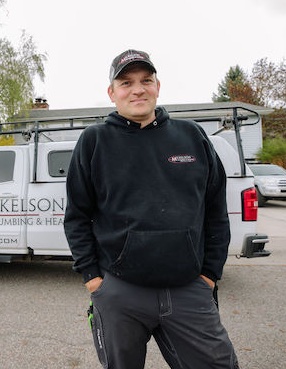 Andy Mickelson
Andy Mickelson
Owner, Mickelson Plumbing & Heating, LLC
Missoula, Montana
I wish I would have known how to anticipate the time required to run the behind-the-scenes portion of our business, not sure it would change anything, but nonetheless it would have been nice to know what to expect.
I have learned that every employee has their own baggage and quirks that show up occasionally and require a special set of kid gloves to handle.
I also have learned that I need to be open minded when it comes to trusting my employees to do their best and allow them to make choices that sometimes might not completely align with what I would have done.
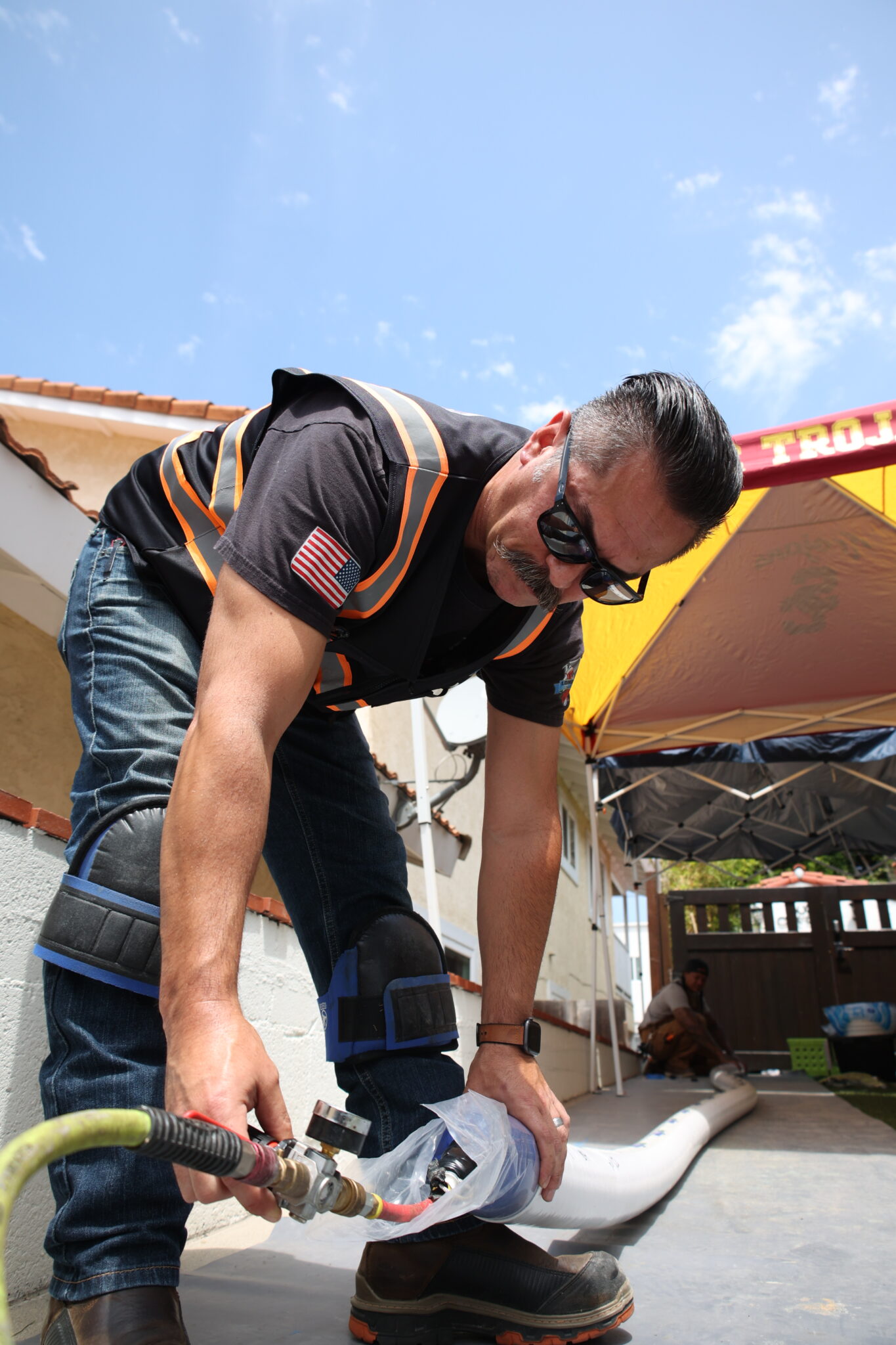 Mike Lomonaco
Mike Lomonaco
Owner, Lomonaco Coast Plumbing,
San Clemente, Calif.
Make sure you know business; it takes more than being a good technician and wanting to go out on your own to be successful.
Know your competition, and what separates you from your competition.
Know what your definition of success is, and where to draw the line. It’s about how much money you save, not how much money you spend. Be careful what you wish for, you just might get it. To start your own business is a major commitment. It’s a lifestyle change that doesn’t stop. It is a huge toll on all aspects of life that you will have to juggle.

We recently spoke with Kerry Stackpole, FASAE CAE, CEO & Executive Director, Plumbing Manufacturers International (PMI), about the organization’s advocacy efforts in Washington, D.C. Some really good information is shared here so please take the time to read. MH: What are some of the top plumbing/water legislation/initiatives for which PMI has been advocating over the past few Read more
 We recently spoke with Kerry Stackpole, FASAE CAE, CEO & Executive Director, Plumbing Manufacturers International (PMI), about the organization’s advocacy efforts in Washington, D.C. Some really good information is shared here so please take the time to read.
We recently spoke with Kerry Stackpole, FASAE CAE, CEO & Executive Director, Plumbing Manufacturers International (PMI), about the organization’s advocacy efforts in Washington, D.C. Some really good information is shared here so please take the time to read.
MH: What are some of the top plumbing/water legislation/initiatives for which PMI has been advocating over the past few months/year?
Stackpole: PMI continues to advance policies that strengthen plumbing manufacturers and the American economy at the federal level. As Congress works to address current issues such as rising inflation, China competition issues and the war in Ukraine, PMI remains actively engaged with lawmakers on the following key priorities:
• Bipartisan Infrastructure Package Contains Much-Needed Funding for Water Infrastructure Projects – PMI remains a strong supporter of the bipartisan Infrastructure Investment and Jobs Act that Congress passed, and President Biden signed into law in November 2021 to address decades of underinvestment in the nation’s infrastructure system. Alongside major investments in transportation, electric vehicles, internet, and roads, the legislation earmarks $55 billion for clean water and water infrastructure projects. It represents some of the most significant investments from the federal government in the water sector in decades.
— Much of the funding will be coming through the Clean Water State Revolving Fund (CWSRF) and the Drinking Water State Revolving Fund (DWSRF). These programs are federal-state partnerships that provide communities with low-cost financing for water infrastructure projects and each program will receive $11.7 billion over five years. A good portion of the funding being distributed come from the state revolving funds. Each state will have a priority list of projects up for SRF funding
— It is estimated that there are between 6 million to 10 million lead service lines in the United States. Much of the drinking water infrastructure in older U.S. cities was built before 1950. The new infrastructure law also includes $15 billion to support lead removal projects, with $3 billion being distributed to states and cities in 2022. Forty- nine percent of the state revolving funds must be provided to disadvantaged communities. PMI strongly supported this funding, and not placing matching or cost-share requirements on the states or local governments. Money can go toward direct removal of lead pipes, as well as efforts like identification of lead pipes, as well as the planning and design of new projects.
— While this funding is a good start, industry experts estimate the actual cost of fully replacing all lead pipes in the U.S. could be $60 billion. Additional investments will be needed from the federal government and state authorities.
— PMI also supports full funding for the Water Infrastructure Improvements for the Nation (WIIN) Act. Within WIIN funding is the Voluntary Lead Testing in Schools and Child Care Drinking Water grant program for states, territories, and tribes to test for lead in schools and childcare facilities.

• Get the Lead Out of Assisted Housing Act (S. 4047) – This bill recently introduced in the Senate directs the Department of Housing and Urban Development (HUD) to update its standards to include inspecting for lead in service lines and lead in plumbing, creates a Healthy Homes Lead in Drinking Water Grant Pilot Program to provide grants to states and local governments to be used to create a lead service line inventory, testing for lead in the drinking water at childcare centers and schools, and testing for lead at public facilities like public water fountains and remediation. In addition, it requires notification of tenants of the level of lead in drinking water found and must offer interim controls, such as the installation of water filters known to remove lead.
• Addressing Disruptions in Domestic and Global Supply Chains – Port congestion, the truck driver shortage and COVID-19 related disruptions are just a few of the challenges plumbing manufacturers are facing in producing and getting products to their customers.
— Congress is on the verge of passing the Ocean Shipping Reform Act of 2022 (H.R. 4996/S.3580), which was recently approved by both chambers (multiple times in the House) and part of the competition legislation which is part of a House-Senate conference. The legislation is aimed at decreasing ocean transportation costs, reducing shipping delays, and decreasing shipping delays through the improvement of shipping standards, and implementation of better oversight mechanisms. PMI is meeting with lawmakers and staff urging passage of the measure and participates in the Ocean Shipping Reform Coalition.
— Another key piece of legislation that PMI supports and actively engaged on is the DRIVE-Safe Act, which would allow younger truck drivers to participate in interstate commerce after completing thorough training. Passing this legislation would help alleviate both current and future trucking shortages.
• Advocating for Policies that Strengthen Manufacturing Competitiveness – As members of the House and Senate enter a conference process to reconcile differences between the House- passed America COMPETES Act of 2022 (H.R. 4521) and the Senate-passed United States Innovation and Competition Act (USICA) (S. 1260) PMI is urging conferees to include these key provisions in a final competition bill:
— Enhancing Research and Cybersecurity Initiatives – PMI is urging conferees to include the National Institute of Standards and Technology (NIST) for the Future Act. It is included in the America COMPETES Act. The bill reauthorizes NIST for five years. It establishes innovative programs to support U.S. global competitiveness and makes crucial investments including funding for the Manufacturing Extension Partnership, cybersecurity vulnerability research initiatives, and premise plumbing research to promote new and innovative technologies that can improve the safety and water efficiency of our plumbing systems in buildings, hospitals, and homes. PMI, its members, and key stakeholder were successful in including the NIST Plumbing Research Act into the NIST for the Future Act, which would re- establish a federal laboratory to conduct research of premise plumbing and to promote new and innovative technologies that can improve the safety, water efficiency and reliability of our plumbing systems. NIST is a critical agency that supports U.S. competitiveness through precision measurement research, partnership with industry, facilitating and developing standards, and support for U.S. manufacturing.
— Increasing Supply Chain Resilience – PMI supports the creation of the Manufacturing Security and Resilience Program and the $45 billion investment to support supply chain resilience included in the America COMPETES act.
— Lift Tariffs and at a Minimum Establish a Broad Section 301 Tariff Exclusion Process – PMI supports provisions to immediately reinstate a comprehensive, fair, and transparent exclusion process that will give manufacturers in the United States a strong voice on China Section 301 tariff relief on a case-by-case basis as included in USICA. While the best solution would be to lift the tariffs and take a more strategic approach to address China’s unfair trade practices, we believe reinstituting this exclusion process is a critical interim step to providing relief to U.S. businesses. PMI continues to call for the elimination of the China Section 301 tariffs. The tariffs in place since 2018 and 2019 are essentially a tax paid by U.S. businesses and consumers.
– PMI testified before the International Trade Commission (ITC) and supplied testimony in opposition to dozens of tariffs on a variety of plumbing fixtures and fittings. Since 2018, PMI has actively participated with nearly 200 trade associations, as part of the Americans for Free Trade coalition and advocated on this issue.
— Ensuring the Tax Code Continues to Support Innovation – The U.S. tax code has allowed companies since 1954 to immediately deduct 100% of their R&D expenses in the year in which they are incurred. However, starting this year, companies must amortize or deduct their R&D expenses over a period of years, which makes R&D more expensive to undertake. This harmful change in the tax treatment of R&D expenses comes at a time of increasingly fierce global competition for research dollars. Due to this tax change, the U.S. is now just one of two developed countries with an amortization requirement (the other one is Belgium). While not included in the base text of the competition legislation, a bipartisan group of 28 senators and 102 House members have signed on to legislation to address this change to R&D policy, and a Senate motion to instruct conferees on this issue was adopted in a 90–5 vote. Failing to reverse the amortization provision will hurt U.S. R&D jobs, innovation, and competitiveness, which is why PMI supports a final bill that addresses this harmful tax change.
• Fighting Retail Crime and Counterfeiting – The rise in organized retail crime over the past two years is a troubling development. Retailers, including home improvement stores, report losing over $700,000 per $1 billion in annual sales volume due to this organized theft activity. Counterfeiting, particularly from China, hits manufacturers of all shapes and sizes.
— PMI strongly supports the INFORM Consumers Act legislation currently pending and part of the America COMPETES Act (noted above). The bipartisan bill modernizes the nation’s consumer protection laws, with a particular focus on addressing the sale of counterfeit and stolen merchandise on e-commerce platforms. It would require online marketplaces to verify the identity of high-volume third-party sellers to make it more difficult to fence stolen merchandise online and also address the sale of counterfeit goods.
• SEC Climate Rule – 2022 will be an important year for Environment, Sustainability and Governance (ESG) regulatory activity. Investors, customers, and the public demand to know more about companies’ environmental policies. They may soon get that additional transparency with a new proposed Securities and Exchange Commission (SEC) rule mandating public companies track and report carbon emissions and climate-related risks throughout their entire supply chains.
PMI members have been making solid progress in their sustainability efforts. They have long been leaders on climate solutions. Many also regularly provide climate-related information to their investors, including via corporate sustainability reports, third-party reporting frameworks and SEC filings.
In the meantime, we’re keeping a close eye on the proposed SEC rule. It’s anticipated that some companies and trade groups will challenge the rule saying it goes too far. These new SEC requirements, if adopted, would at the earliest take effect in fiscal year 2023 and begin to apply to SEC filings in 2024. SEC is accepting comments on the proposed rule.
MH: Why does PMI feel that these are the worth the fight?
Stackpole: America’s economic engine drives global economies and enables plumbing manufacturers to deliver rapid innovations in high performing, quality engineered, and safe fixtures and fittings. PMI’s advocacy efforts work to level the playing field for our members to assure they can be successful in designing and delivering products that exceed the needs and expectations of commercial and residential customers. It’s about delivering member value every day.
MH: To what extent is PMI’s involvement on the Hill?
Stackpole: One of the strengths that draws manufacturers to PMI is our well-respected reputation and proactive engagement with Congressional staffs, elected leaders, and regulatory policymakers on the Hill and in state capitals around the country. PMI members benefit immensely from the daily presence of our Federal lobbyist doing the important work of gathering legislative insights, advancing our positions, sharing ideas with our allies in Congress, and support for the efforts of other plumbing industry groups. PMI’s proximity and strong relationships on Capitol Hill help us deliver results for PMI members. We can readily reach out to those who make things happen on the Hill, demonstrate our persistence and work toward meaningful and valuable outcomes. Said differently, we get results.
MH: I’m sure it can get deflating at times advocating something to Big Government, and it even may take months or even years of work, but how do you (PMI) remain positive in its approach?
Stackpole: PMI embraces the art of the long view. Our advocacy goals – both short and long term – demand we stay focused on the desired outcomes. When you realize that achieving those outcomes will change people’s lives for the better, you simply cannot afford to be deflated by the process. I think it was Steve Jobs co-founder of Apple who said, keep your eye on the prize and rest will take care of itself. I could not agree more.
MH: Can you describe the feeling of being a part of a successful initiative?
Stackpole: There’s an enormous sense of satisfaction and joy in achieving something important for our members, their employees, and for the communities in which we all work and live. One example, PMI and its industry allies have for years encouraged federal lawmakers to formally authorize EPA’s successful WaterSense program and to take steps to rebuild and revitalize the nation’s water infrastructure. PMI was successful with the passage of the America’s Water Infrastructure Act (AWIA) signed into law by the President in October 2018. PMI met with the staff of dozens of congressional members and wrote a gazillion letters underscoring the importance of the WaterSense authorization. Knowing you’ve made a difference that will improve your fellow citizen’s access to clean water, and safe, responsible plumbing, is personally very satisfying and rewarding.

https://youtu.be/46yc2caCGzo A quick Hub on the Road takes us to Grasser’s Plumbing & Heating in McNabb, Ill., to visit with Tim Kuhlman to talk about the company, its new showroom, inventory and supply, and a plumbing truck tip Read more
A quick Hub on the Road takes us to Grasser’s Plumbing & Heating in McNabb, Ill., to visit with Tim Kuhlman to talk about the company, its new showroom, inventory and supply, and a plumbing truck tip.

Like many others in the plumbing industry, Chase Wenger started out on the weekends helping his dad, who is co-owner (with Chase’s uncle) of C.V. Wenger Inc., Chambersburg, Pa. “When I was a kid, I hated cleaning the house so I would leap at any chance to go to work with my dad. We’d stop for Read more
Like many others in the plumbing industry, Chase Wenger started out on the weekends helping his dad, who is co-owner (with Chase’s uncle) of C.V. Wenger Inc., Chambersburg, Pa. “When I was a kid, I hated cleaning the house so I would leap at any chance to go to work with my dad. We’d stop for gas, and he’d buy me a soda and a candy bar, and we’d ride around to jobs and spend the day together,” says Wenger. “Those are some of my fondest memories,” recalls Wenger. “I put my first boiler in with my dad when I was in elementary school, and from that point on I was hooked.”
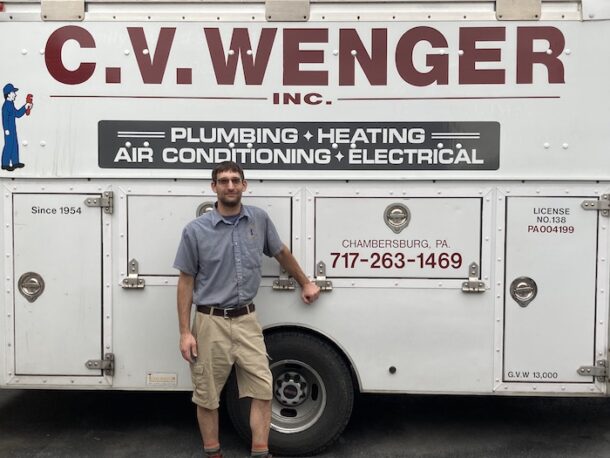
Chase owes a lot to his dad, uncle and grandfather—who started the company in 1954—who all become mentors in some fashion. “They taught me to do the best I can no matter what, to be resourceful, and to think outside the box, while always encouraging me to learn more,” says Wenger.
In addition, Dan Holohan is a huge mentor for Wenger as well, even if he doesn’t know it. “I recall telling him one time about a steam system I put in from scratch, he shook my hand and told me, ‘Congratulations, that automatically makes you 65 years older kid, great job.’”
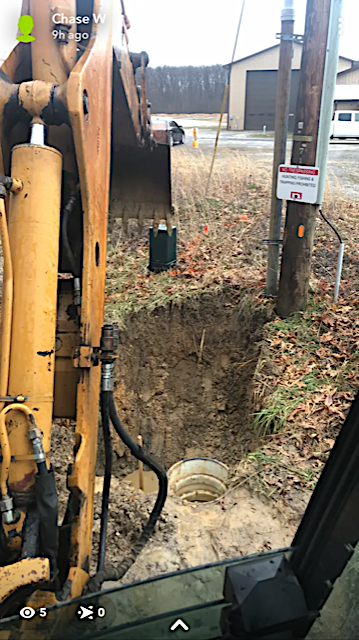 Wenger likes to think that that every tradesman he’s ever met/worked with was a mentor, continuously trying to learn something new from everyone he meets. Although he fondly recalls shakily holding the flashlight for his dad as a young boy’s mind wandered around almost as much as the flashlight beam, searching through the truck for the 5th time for that screwdriver he’s sure he left back there. “If you want to keep a kid indisposed for a bit, just assign them a mission they can’t complete if you have that one thing they’re searching for hidden in your toolbox. LOL,” says Wenger.
Wenger likes to think that that every tradesman he’s ever met/worked with was a mentor, continuously trying to learn something new from everyone he meets. Although he fondly recalls shakily holding the flashlight for his dad as a young boy’s mind wandered around almost as much as the flashlight beam, searching through the truck for the 5th time for that screwdriver he’s sure he left back there. “If you want to keep a kid indisposed for a bit, just assign them a mission they can’t complete if you have that one thing they’re searching for hidden in your toolbox. LOL,” says Wenger.
Moving on Up
Chase made his way to washing trucks and stocking shelves, eventually moving on to help with installs. Then one especially busy day, a lead guy didn’t come to work. “I was instantly upgraded to a full-fledged tech/plumber. As I learned more, I decided I needed to get my Masters Plumber License. From that point on, I started to design my own systems in addition to installing them,” says Wenger.
 And while Wenger’s official title of Supervisor/Lead Field Foreman has him lead larger projects—from commercial to residential—from both installation and service work, as well as troubleshooting and tech support roles for other technicians, one of the most rewarding things to me is helping out someone in need, whether it’s replacing a broken well pump, resolving his/her water quality problems or restoring a customer’s heat in the dead of winter. “Although, making a customer’s dirty, brown-stained, sulfur-smelling water into delicious crystal clear water is especially satisfying for me,” says Wenger.
And while Wenger’s official title of Supervisor/Lead Field Foreman has him lead larger projects—from commercial to residential—from both installation and service work, as well as troubleshooting and tech support roles for other technicians, one of the most rewarding things to me is helping out someone in need, whether it’s replacing a broken well pump, resolving his/her water quality problems or restoring a customer’s heat in the dead of winter. “Although, making a customer’s dirty, brown-stained, sulfur-smelling water into delicious crystal clear water is especially satisfying for me,” says Wenger.
Wenger also enjoys replacing old worn-out systems—wells, water systems, drainage systems, heating/air conditioner systems, etc.—with new efficient ones while cleaning them up and generally making them better all around.
 Wenger’s main specialty is well pumps, water treatment, excavation, in addition to regular service/install work with anything the company offers. Oh, and by the way, Wenger is also a licensed Master Electrician, HVAC tech, and he runs a sheet metal shop.
Wenger’s main specialty is well pumps, water treatment, excavation, in addition to regular service/install work with anything the company offers. Oh, and by the way, Wenger is also a licensed Master Electrician, HVAC tech, and he runs a sheet metal shop.
But with all hard work comes some play time, right? “It’s always a tricky balance, but you just need to set specific boundaries and make time to do the things you want to do.” For Wenger, kayaking, reading, spending time with my family and friends is time well spent. A bucket list item? “Definitely kayaking over more waterfalls, or trying wing-suiting in Scandinavia.
Moving the Industry Forward
Moving forward, the industry needs to continue to eliminate the stereotype of the plumber as an unclean, uneducated worker would be a good start, says Wenger. Also, “We need to showcase how rewarding/satisfying the profession/industry is, offering education/training. A lot of people dislike working on things that they don’t completely understand, and paying them what they’re worth,” says Wenger.
Social media has helped the trades’ image problem. “It’s definitely helped me meet others in the trade, well beyond my regular service area,” says Wenger. “I’ve learned a lot from seeing how others do things and talking with them. I like to think everyone can teach you something in life—even if it’s simply what not to do.”
In the end, it’s about passing the torch. “I tend to forget that I’m not the new guy anymore, even after 15 years. I certainly hope I can be a role model for others both in the trade, and those considering joining this marvelous trade, and any other trade out there. It’s a wonderful career to have,” says Wenger.
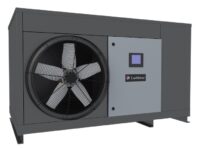
According to a recent study by Global Market Insights, the air source heat pump market value is projected to cross $77 billion by 2028. Increasing demand from growing real estate sector along with soaring requirement of space heating applications across colder regions will encourage the product deployment. Air to water source heat pumps segment is Read more
According to a recent study by Global Market Insights, the air source heat pump market value is projected to cross $77 billion by 2028. Increasing demand from growing real estate sector along with soaring requirement of space heating applications across colder regions will encourage the product deployment.
Air to water source heat pumps segment is anticipated to witness a noteworthy growth owing to various features including simple design and easy installation, says the report. Rising global temperature and growing green building construction will provide positive drivers for product deployment. Integration with solar heating source and hence low input cost for product across temperate countries will drive the space heating systems demand in the forecast timeline.
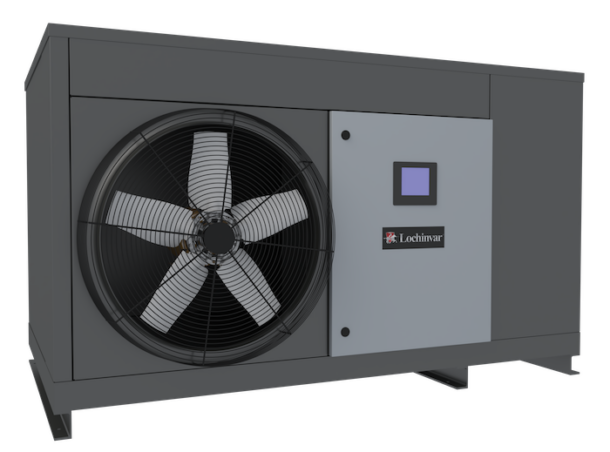
Lochinvar’s air source heat pump water heater
The movement towards electrification—moving away from fossil fuel—seems to be the main driver of the heat pump movement. “I think consumers see an option to add PV, or join a solar garden, to become more energy independent. So having a heating, cooling and DHW option powered by your roof makes some sense. The rise in fossil fuel prices, uncertainty around supply certainly adds some motivation to look at heat pumps,” says Bob ‘Hot Rod’ Rohr, training manager, Caleffi, and former hydronic contractor of more than 30 years.
Recently, Mechanical Hub spoke with Arthur Smith, Residential Product Manager, A. O. Smith, and Jennifer Russell, Segment Development Manager, Decarbonization, Lochinvar, to get the latest on heat pump technology and heat pumps water heaters.
MH: What are some of the driving forces behind this technology?
Arthur: At A. O. Smith, we’ve seen two major driving factors behind the increasing popularity of residential heat pump water heaters. First, as consumers have begun to see wider availability of this technology, along with its carbon emissions reduction and tremendous cost savings, they’ve pushed to utilize heat pump water heaters in their own homes, further increasing demand. The second driving factor we’ve seen is the evolving regulations around decarbonization. These changes have placed an emphasis on heat pump technology as an excellent option for greenhouse gas reduction.
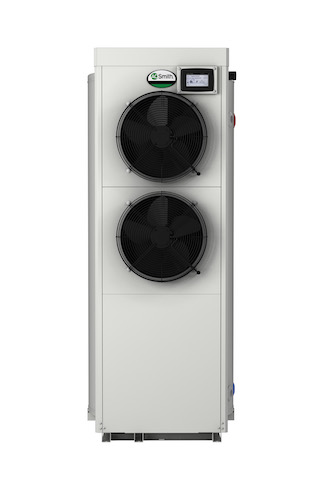
A. O. Smith’s CHP-120 heat pump water heater
Jennifer: On the commercial side, greenhouse gas emission reduction is the main driving force behind the increase and development of heat pump technology. However, due to the lack of availability of commercial heat pump technology, we don’t see it utilized in applications as often as the residential sector. In addition to state and local reduction goals, there are also many companies and building owners who are setting their own goals for reducing greenhouse gas emissions and they’re seeking out heat pump water heaters as a way to meet those goals.
MH: What are the benefits of heat pump technology?
Arthur: The core benefit of heat pump water heaters is the massive jump in efficiency. High efficiencies drive cost savings, which is a huge benefit to homeowners.
Jennifer: One of the main benefits of heat pump technology is that there are zero direct carbon emissions from the unit. For any commercial building looking to decrease its environmental impact footprint, this technology can play a big role in meeting those goals. In addition to the environmental benefits, heat pump technology is also incredibly efficient, providing an average annual efficiency of 200-300%.
MH: Do you see demand for heat pumps more on the residential side than commercial? What is the ratio?
Arthur: Overall, we’ve seen significant interest in both commercial and residential applications.
Jennifer: At Lochinvar, we’ve seen interest in both commercial and residential applications. Interest in ommercial applications for heat pump water heaters has grown significantly in the last couple of years, primarily due to evolving state and local environmental regulations.
Can the grid support a heat pump transition?
Arthur: The grid has been able to support the transition so far, but as heat pump technology continues to increase in popularity, developing the grid will need to be prioritized. It seems that most regulators are aware of this need to develop the grid and are building their regulations accordingly so the grid isn’t overwhelmed.
Jennifer: While the grid may be able to support a heat pump transition eventually, it can’t happen overnight. It’s going to take many years to fully develop a grid that can support a full transition to heat pump technology. In the meantime, we can develop and implement tools, such as demand-response technology, to help support the transition.
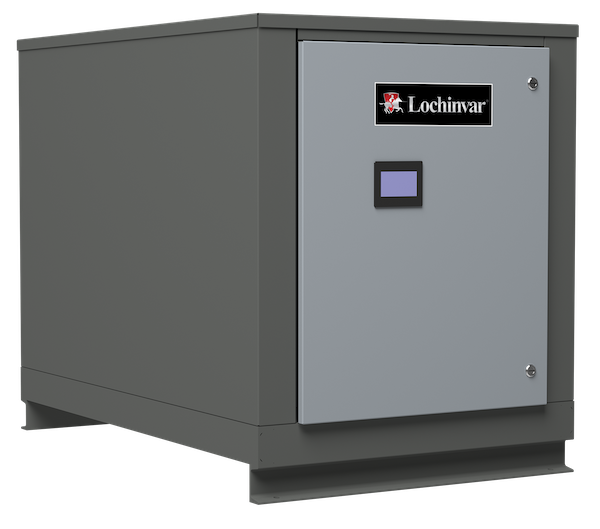
Commercial Heat Pump Water Heater
MH: Is a different skill set required for installation?
Arthur: On the residential side, there isn’t a different skill set required for installation. A. O. Smith designed our residential heat pumps so they can be installed in almost the same way as our standard electric water heaters. There are still some minor considerations, like draining non-acidic condensate produced by heat pumps and differing space requirements, but overall, the installation process is nearly the same as what most contractors are familiar with now.
Jennifer: There isn’t a different skill set required for installation, but there is unique training that can better prepare someone to install or service heat pumps. Heat pump water heaters have features that differ from traditional water heaters and these features require different training. Lochinvar offers training to help educate on the unique application features of heat pump technology.
MH: What is the life expectancy compared to boilers?
Arthur: Our heat pump water heaters are built to the same quality standards as all A. O. Smith products. We put care into developing products that perform well throughout their lifetime. We’re confident in our products and offer a standard 10-year limited warranty on every heat pump we produce.
Jennifer: You’re not going to see any loss of life expectancy with heat pump water heaters. They’re designed to hold up and perform as well as other water heating technology
MH: Do you offer training for these products?
Arthur: Since residential heat pump technology has been around for a bit longer than commercial, we’ve had time to develop training resources that focus on the installation and servicing of these units. A. O. Smith University offers digital live training at www.university.hotwater.com and there are courses available that focus specifically on heat pump technology.
Jennifer: At Lochinvar, we offer training resources to educate sales reps, engineers, contractors and technicians on heat pump technology. At the moment, our heat pump training focuses on topics such as applications for heat pumps, ensuring the correct unit size specification and understanding the technology’s benefits and features.
